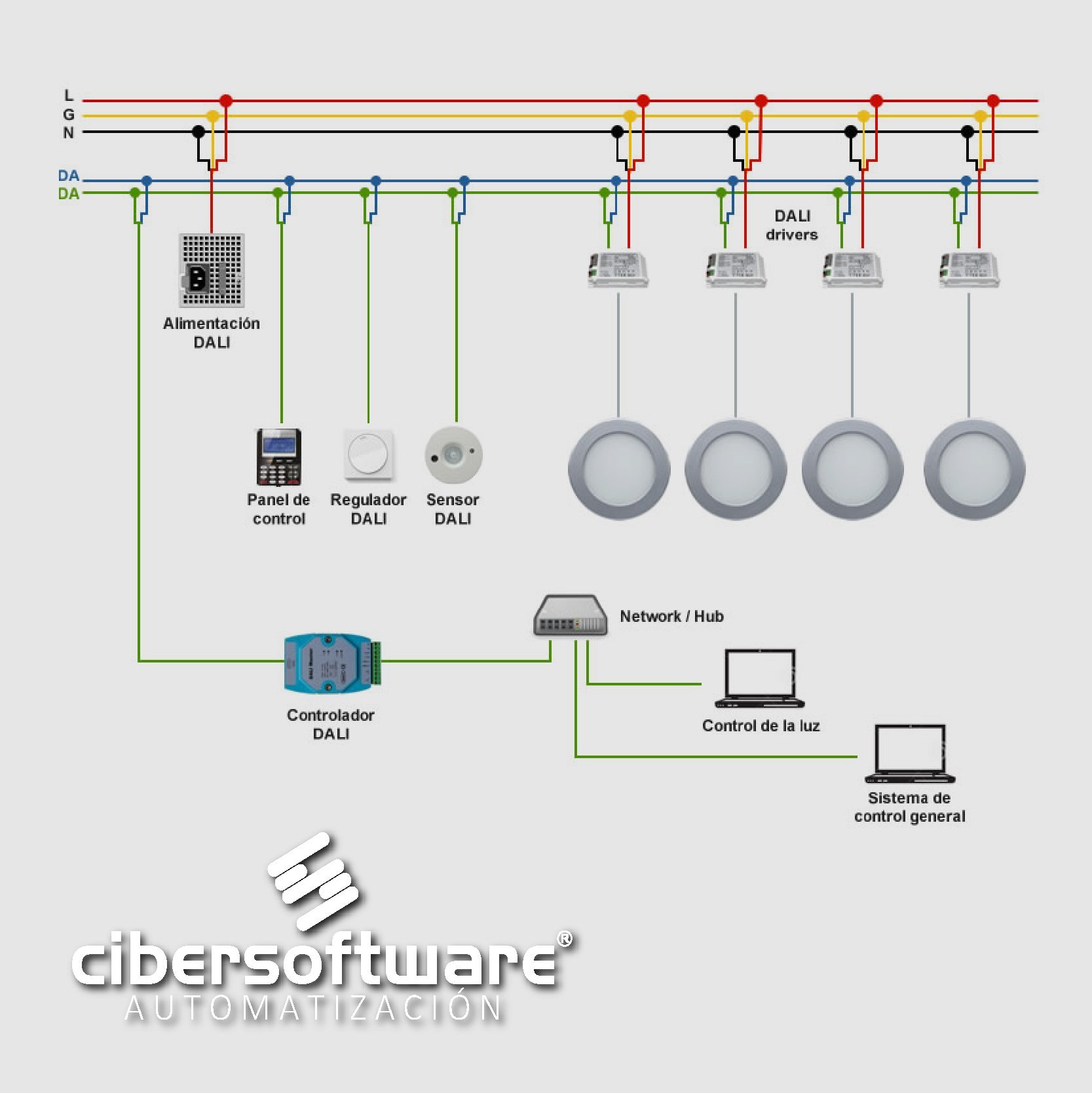BMS Systems Office
The Building Management Systems (BMS), from its appearance at the end of the 70s to the present, have undergone a great evolution, like the rest of the control systems. A modern BMS is based on the integration of a series of subsystems that, in general, share an infrastructure such as: database, alarm center and other specific subsystems such as lighting control or air conditioning. The lower figure reflects the topology of a complex BMS, with dedicated and independent systems for lighting, climate control and access control that share an integration infrastructure. This way you can observe the presence of the corresponding protocols that operate in different management areas such as lighting (DALI), air conditioning (BACNet), etc.

When considering the design of a BMS system it is very important to know the functionalities to be covered in the application environment. In this context, it is convenient not to confuse BMS systems oriented to tertiary buildings (industrial side) with BMS oriented to family homes (domotic slope). In both fields you can find equivalent systems but with differences that can turn a success story into a resounding failure. In smaller systems, such as private buildings and homes, a PLC with few entrances / exits was placed to support air conditioning, lighting and other aspects to be controlled. Today, this idea evolves towards the implementation of independent elements based on control sensors, which send messages via Ethernet that are displayed on a tablet or similar; that is, an evolution of BMS systems towards a subset of the IoT (Internet of Things) paradigm is appreciated.

The base technology of the control systems of the BMS systems is similar to the systems based on more traditional PLC equipment such as those used in the electrical sector. What really differentiates this environment from others is the adaptation of the control systems to the protocols used to communicate the devices with each other and with the servers.
Within a BMS there are many protocols, some of them specific to this field of application and others more general. Among the specialized communications protocols we could highlight DALI, for the management of lighting, or BACNet, used in the management of air conditioning systems. In turn, among the more general protocols we can mention KNX, LonWorks or ModBUS. Perhaps due to its simplicity, the latter is implemented by a large number of BMS manufacturers and has de facto become one of the most common standards.
Many of these protocols are very old and at the time of their birth, security was not one of the design priorities. Nowadays, it is necessary to include security improvements for the protocols used, such as encryption or authentication, and to be interoperable. These improvements are now being incorporated.
A series of new generation wireless protocols (ZigBee, Wifi, EnOCEAN, ...), which strive to establish themselves as the dominant family in this sector, have joined the aforementioned series of protocols. Wireless protocols implement higher levels of security, which reduce their threats against external attacks, but lack the reliability (in terms of high availability, latency, etc.) of their cable counterparts.
